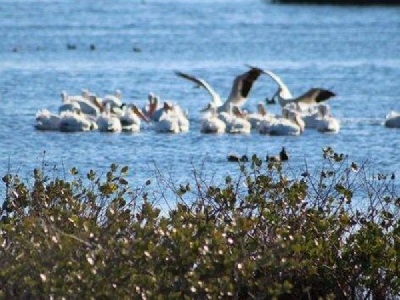
Posted on August 23, 2018
The Indian River Lagoon is home to thousands of different animal and plant species cohabitating in one of the most diverse estuaries in the world. But for the last five decades, human development coupled with negligence toward the estuary’s preservation, has manifested into an unprecedented health report card.
The repercussions of our impact are visible above and below the surface. Housing developments overrun natural habitats while pollution corrupts oxygen levels in the water. Most of the problems plaguing the lagoon are man-made; but so are the solutions.
This timeline provides a brief history of the decades leading up to the lagoon’s current state, what got us here and what’s being done to repair this special place along the Space Coast.
1960s: A new frontier of space exploration changes the landscape of Brevard County, with NASA offering new and exciting opportunities to be a part of history. Innovative careers in aeronautics, electrical engineering and manufacturing attract thousands of people to the coast, transforming Cape Canaveral’s marshlands and scenic beaches into new communities and neighborhoods.
1970s: A decade of population growth and development leads to an increase in pollutants and depleted oxygen levels in the Indian River Lagoon, as well as a need for mosquito control. Dikes are constructed to form barriers between thousands of acres of waterways in an effort to decrease mosquito breeding. As a result, mangrove forests are destroyed, affecting hundreds of species of fish, which use them as nurseries.
1990: Florida Legislature passes the Indian River Lagoon System and Basin Act requiring sewer plants to stop discharging into the estuary by 1996. The act aims to protect the lagoon from wastewater treatment plant discharges and the improper use of septic tanks.
1995: Biologists observe the degradation of the lagoon’s cornerstone resource, seagrass. Of its 156-mile span, seagrass spreads across only 100,000 acres. The vegetation is necessary in providing food and habitats for marine life as well as maintaining water quality.
1998: Millions of cubic yards of muck are removed over the next 10 years across various areas of the lagoon. Its accumulation is blamed on construction, farming, erosion and dead plants that rot on the bottom of the lagoon and prevent new growth.
2011: Fertilizer run-off breeds brown tide and algae blooms in the Indian River Lagoon, leading to further loss of seagrass beds and a high number of wildlife deaths.
Brevard Zoo
Toni the sea turtle from the Indian River Lagoon receives treatment for multiple tumors at the Brevard Zoo.
2012: Dolphins and sea turtles in the lagoon start to develop tumors and fungal growths. By this year, 50 to 70 percent of green sea turtles in lagoon show physical signs of fibropapillomatosis, debilitating tumors caused by biotoxins or contaminants.
2013: To accommodate new housing developments, 85 percent of the lagoon’s vital mangroves are removed. Mangroves keep estuaries healthy by defending shorelines from erosion and protecting fish nurseries.
2016: Brown tide and algae growth, visible throughout the lagoon from space, prompts more funding for the county’s muck-dredging project. A total of $800,000 is added to the $20 million previously awarded for the Brevard County muck-dredging project within the last two years.
Voters rally for the Indian River Lagoon tax plan, while officials work to lower nitrogen and phosphorus levels, which can reduce the production of algal blooms.
A half-cent sales tax hike is proposed to raise $300 million over the next 10 years to clean up the lagoon.
Source: ClickOrlando





